The heart of most summer camps is the dining hall, where the community gathers at least three times a day: it’s where the “bug juice” (fruit punch) is served, songs are sung, and nightly skits are performed.
These rituals and more have a new home at the YMCA Camp Kanata, in Wake Forest, North Carolina, where architect Andre Johnson has designed an airy lakeside facility that sits comfortably among traditional neighboring wood cabins. It also adds a distinctly modern form to the 150-acre campus catering to campers ages 6–15. “We tried to simplify it and make it clean,” said Johnson, whose Raleigh-based firm, Andre Johnson Architects—a 2021 RECORD Design Vanguard—has designed a range of contextually sensitive projects across the Tar Heel State.
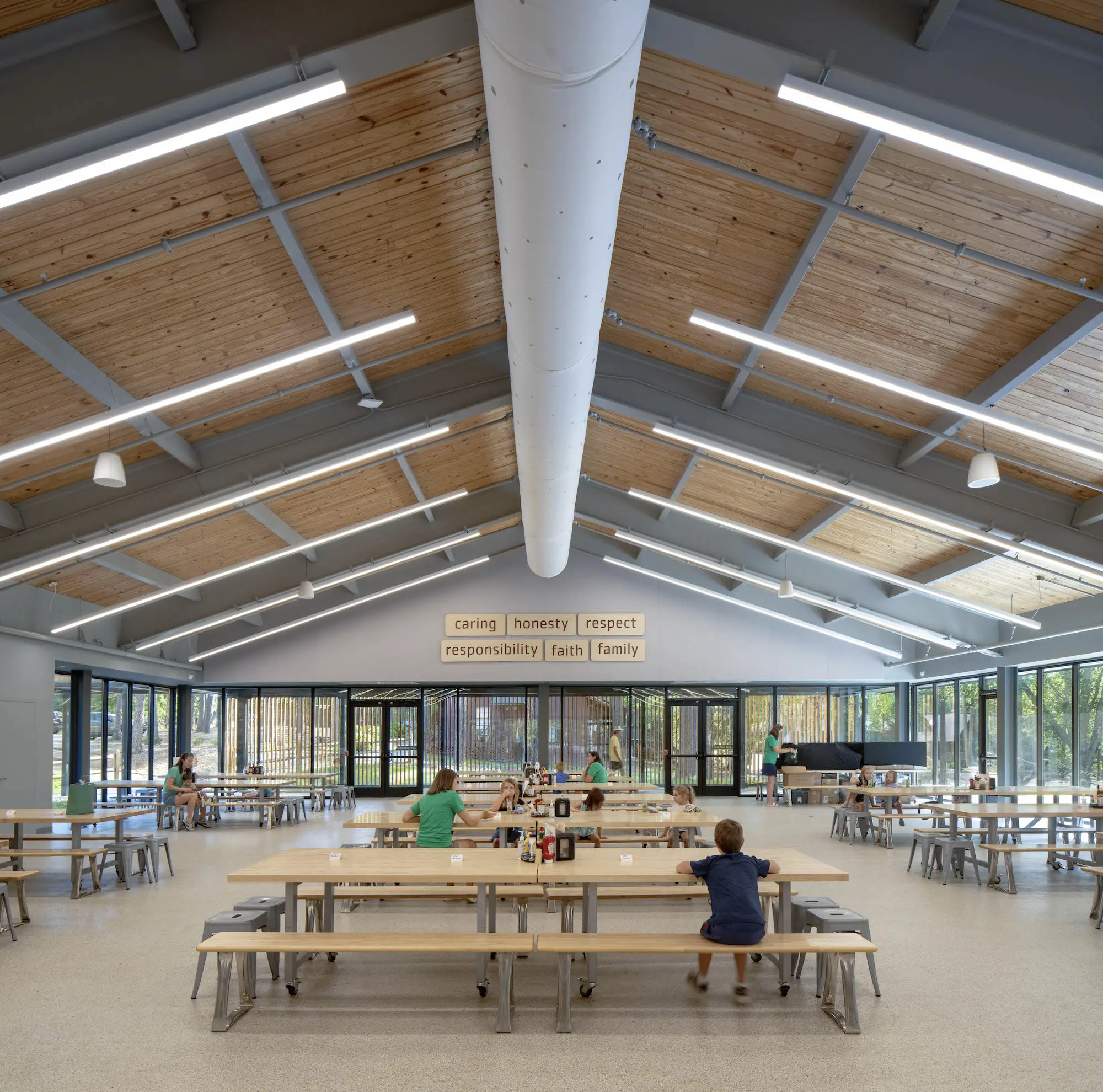
The new building can accomodate twice the number of hungry campers and staff than the previous dining hall. Photo © Tzu Chen Photography
Kanata, a traditional coed overnight and day camp, was founded in 1954, and its previous dining facility was original to the heavily wooded site. Johnson and his team determined the building was past its useful life, and it needed to double its capacity to feed nearly 400 campers and staff at a time.
Completed in 2022 on the same site as the former dining hall, the new facility is H-shaped in plan, with a rectangular dining volume to the south and a slightly smaller kitchen facility to the north, connected by a breezeway. Several challenges dictated the building’s form and position, including its hilltop site and the need for Johnson and his team to maintain a certain distance from the nearby cabins. Disconnecting the kitchen from the dining hall allows campers to line up on either side of the building before meals (boys on one side, girls on the other). “We couldn’t go long,” said Johnson, “and an L-shaped building would have created some inefficiencies.”
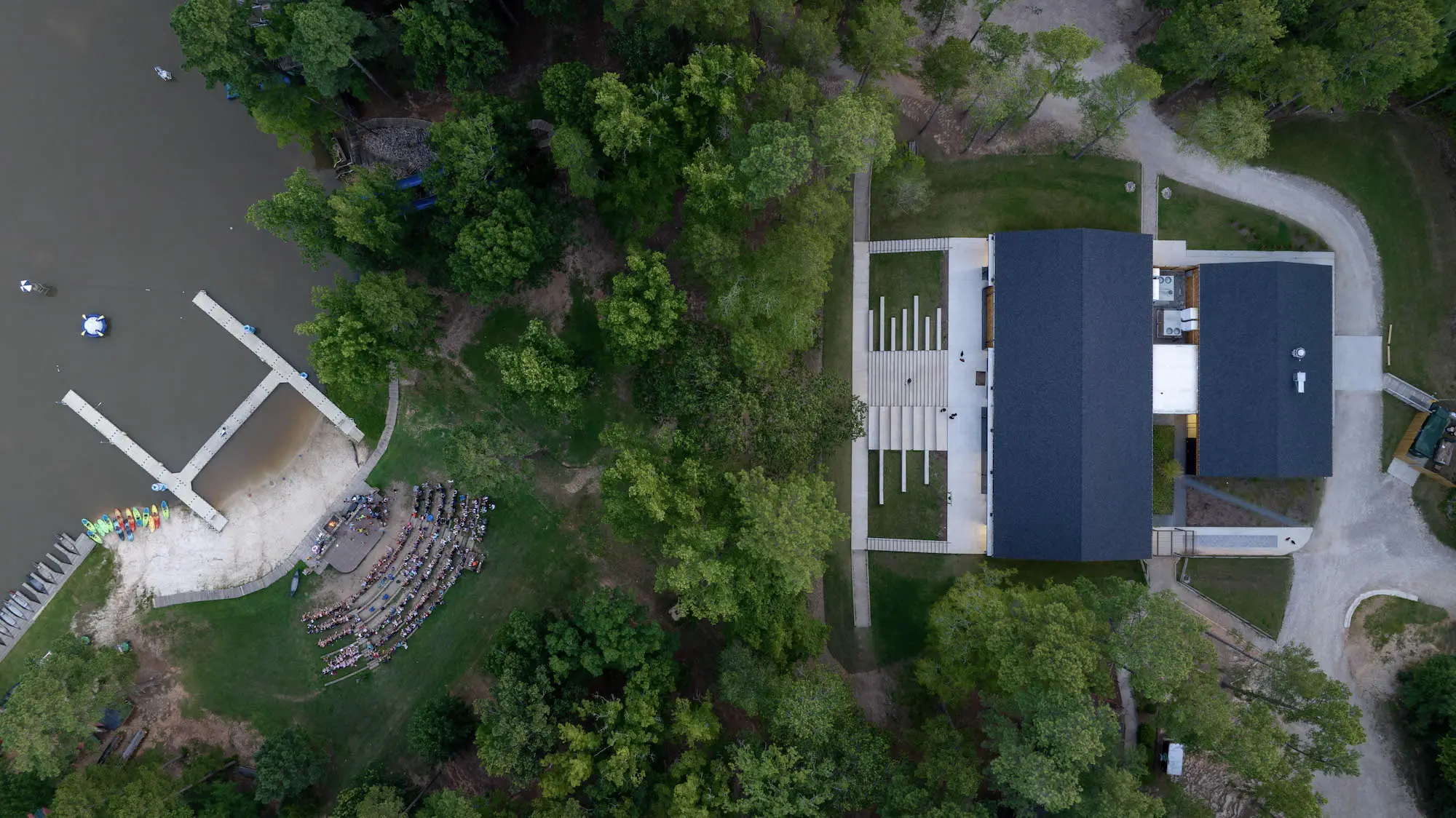
Aerial view of the dining hall with the camp's lakeside gathering area and docks on the left. Photo © Tzu Chen Photography
The architects were required to clad the building in T1-11 plywood to match the other rustic camp buildings, but Johnson also introduced charred wood accents for a dramatic contrast. On the eastern and western ends of the dining hall, elegant wood screens along exterior porches provide solar mitigation and prevent light from disturbing campers sleeping in the nearby cabins. The tongue and groove A-frame roof with steel purlins is another nod to the surrounding building forms.
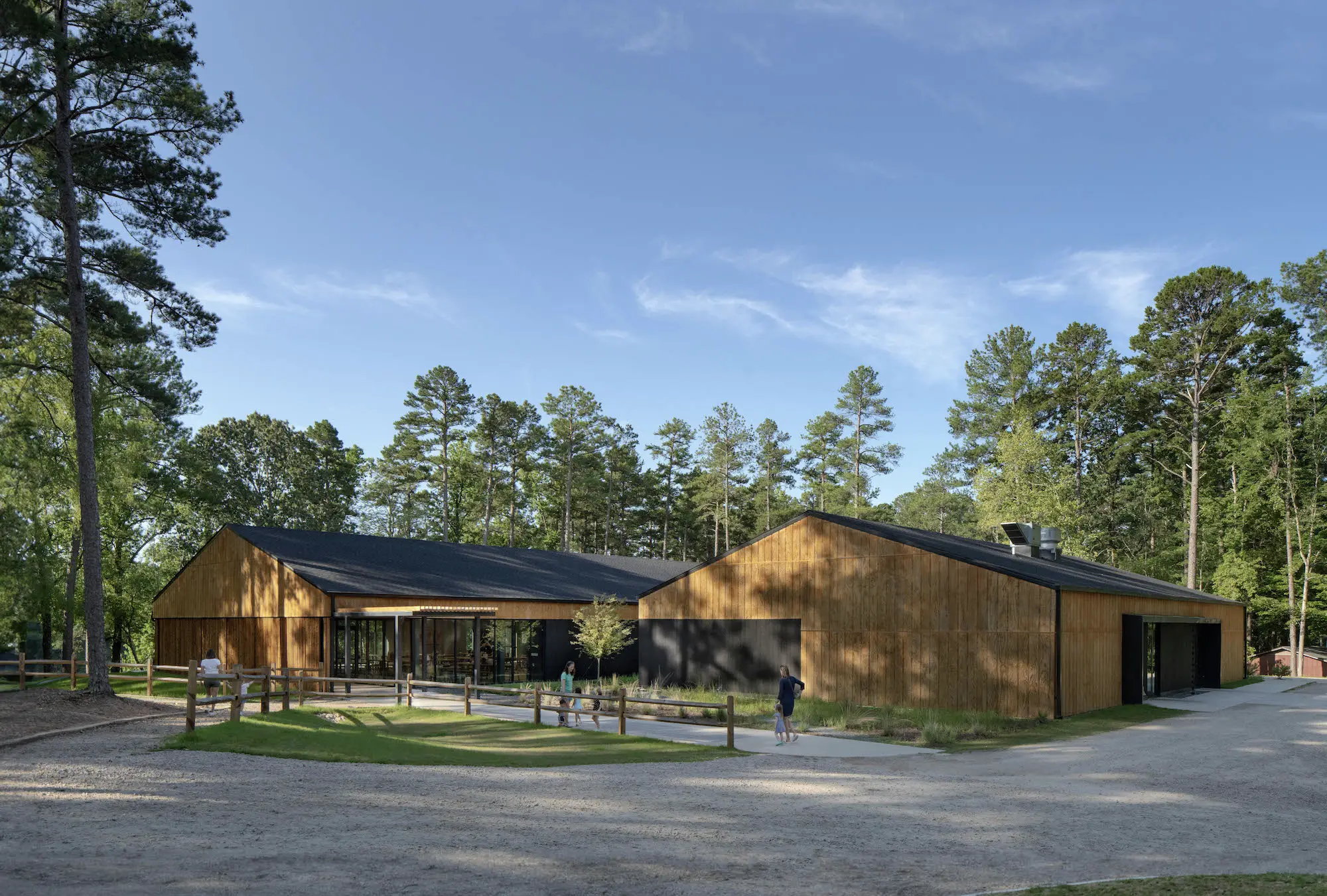
1
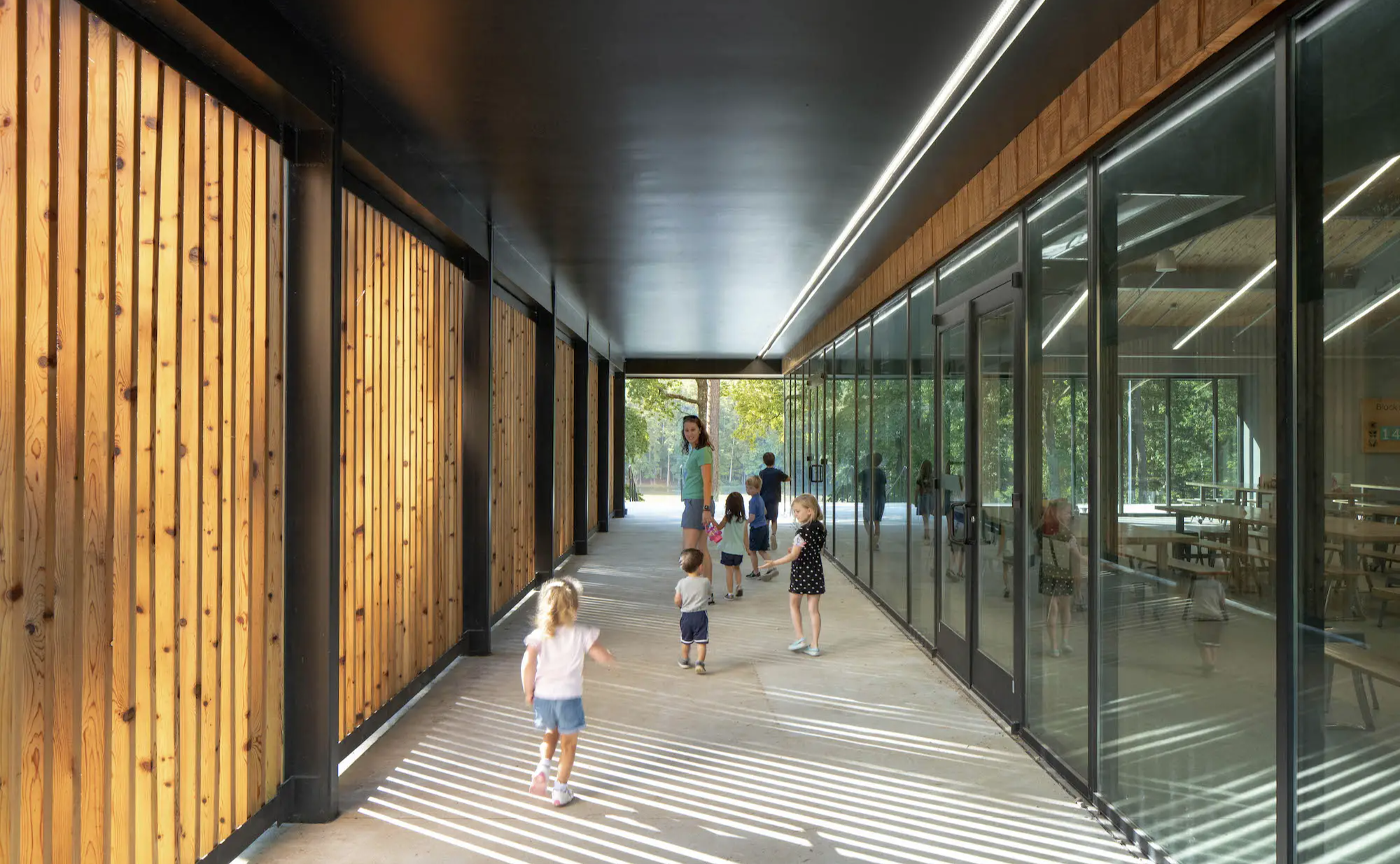
2
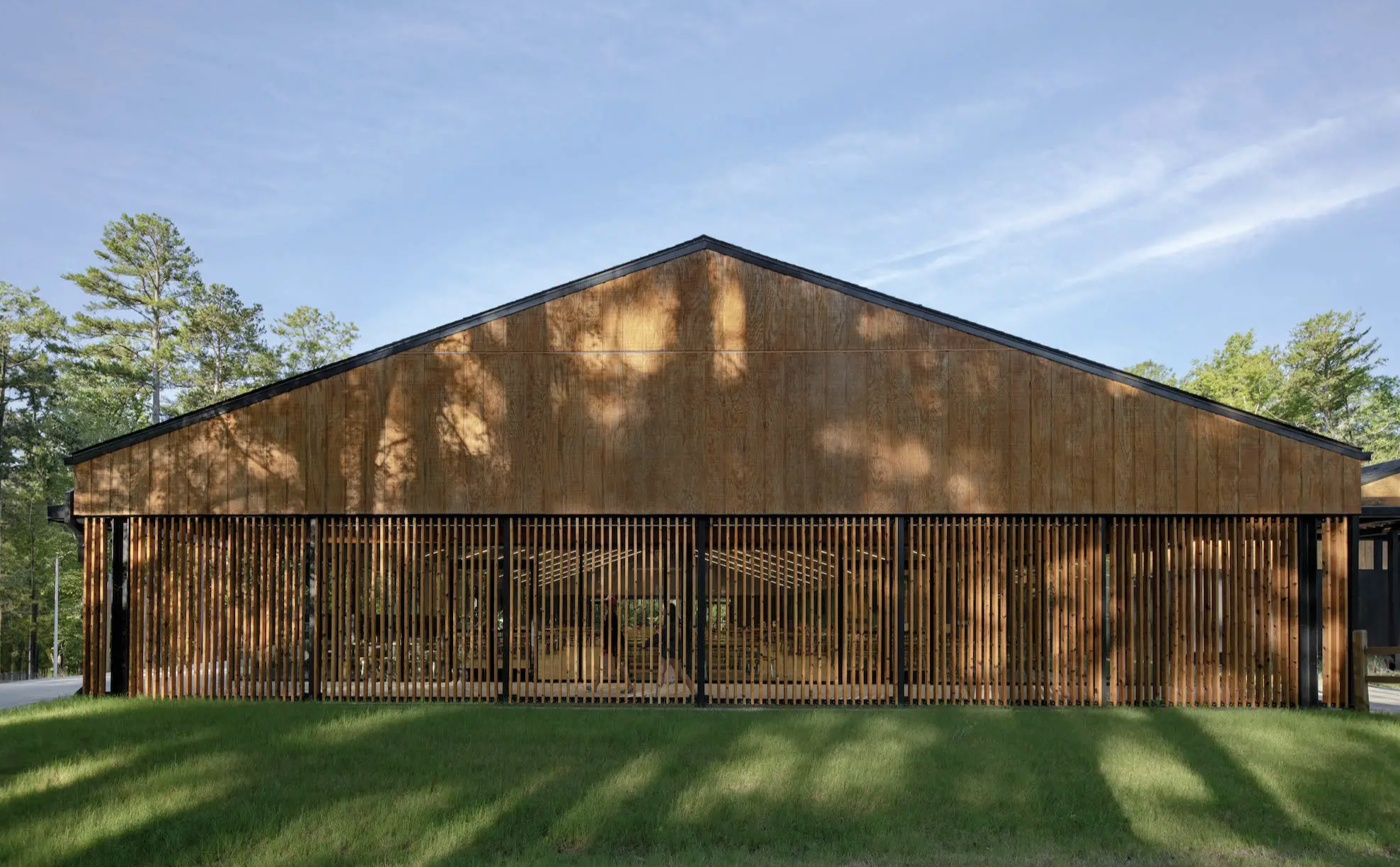
3
Front entrance and camp drop-off area. The dining hall is on the left and breezeway-connected kitchen on the right (1); wooden screens on the eastern and western ends of the building line exterior porch areas and prevent bright light from reaching the neighboring cabins at night (2,3). Photos © Tzu Chen Photography
An entry canopy extends from the building’s eastern elevation, welcoming visitors and parents at camp drop-off. Here, Johnson designed a donor walkway that extends from a gravel drive to the dining hall’s glazed facade. Noticing that the community gathers outside for many events and programs, Johnson and his team also designed concrete stadium steps that descend from the dining hall down towards an existing amphitheater along the camp’s 15-acre lake. “By doing so we improved the storm water on site and reduced erosion,” he said.
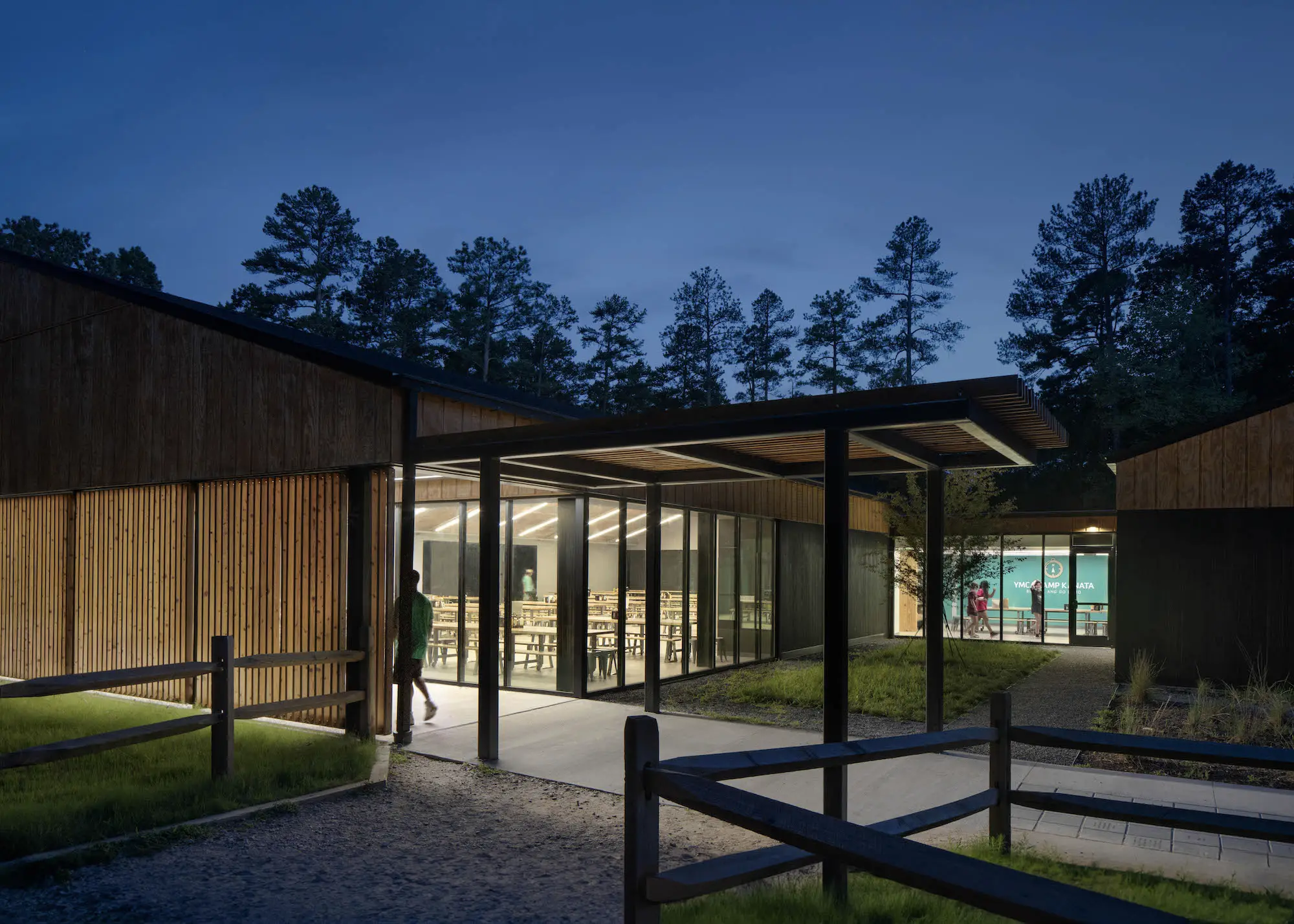
Lights out at Camp Kanata. Photo © Tzu Chen Photography
The result is a large building that is deceptively scaled and blends in with the surrounding cabins. “That was intentional,” said Johnson, “to be respectful of where we were and the client.”
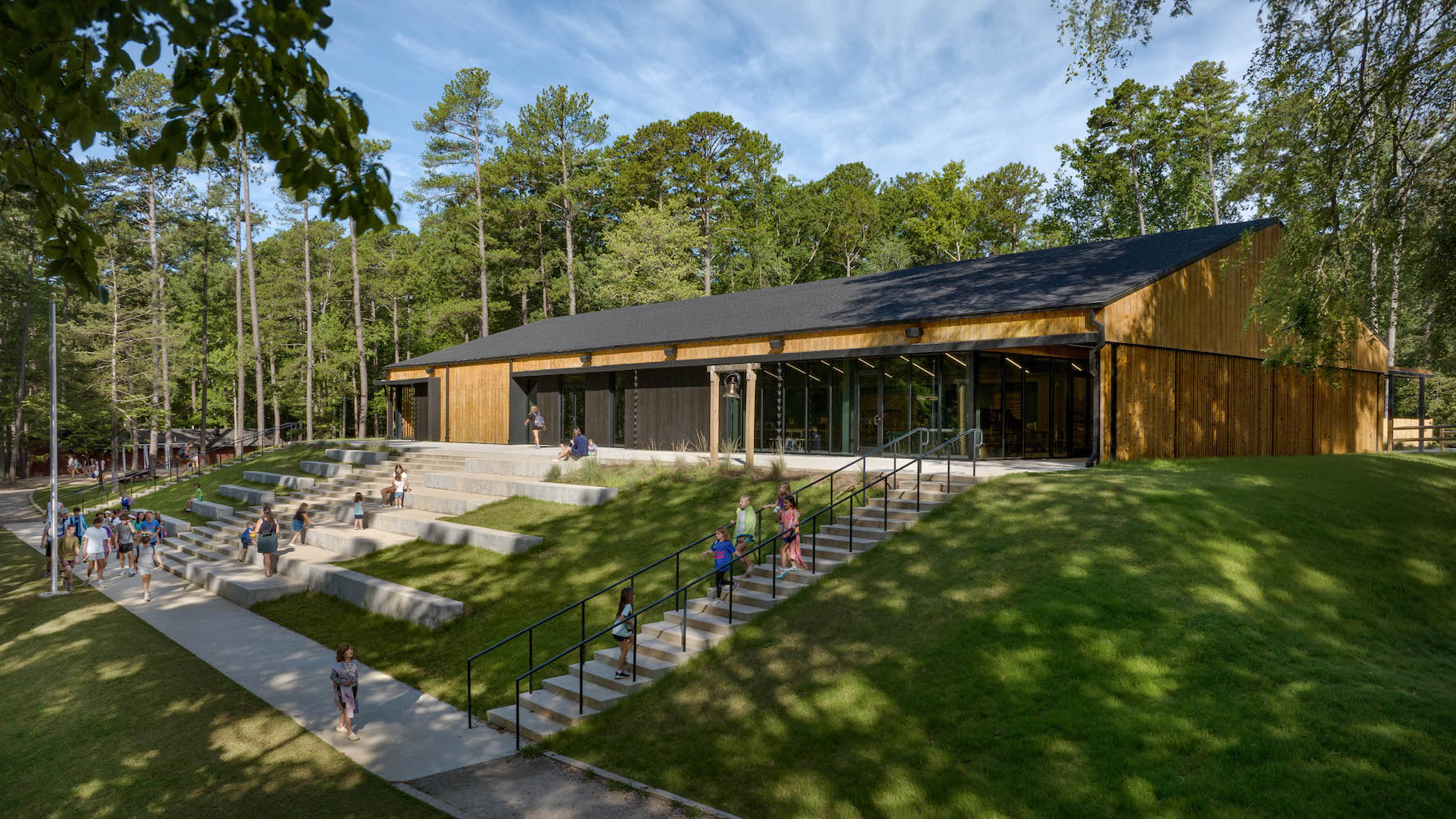


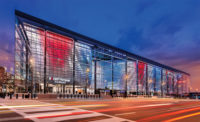
Post a comment to this article
Report Abusive Comment